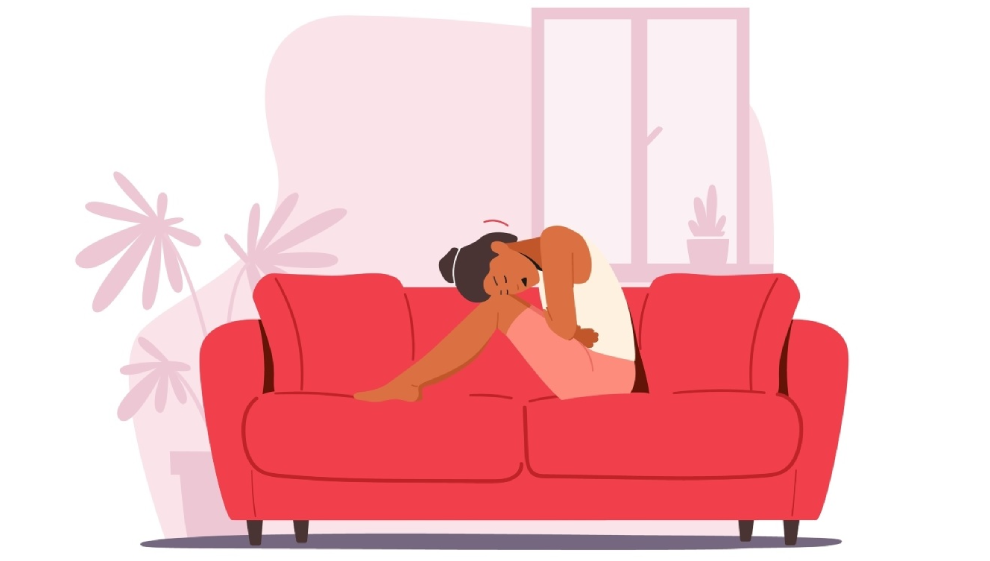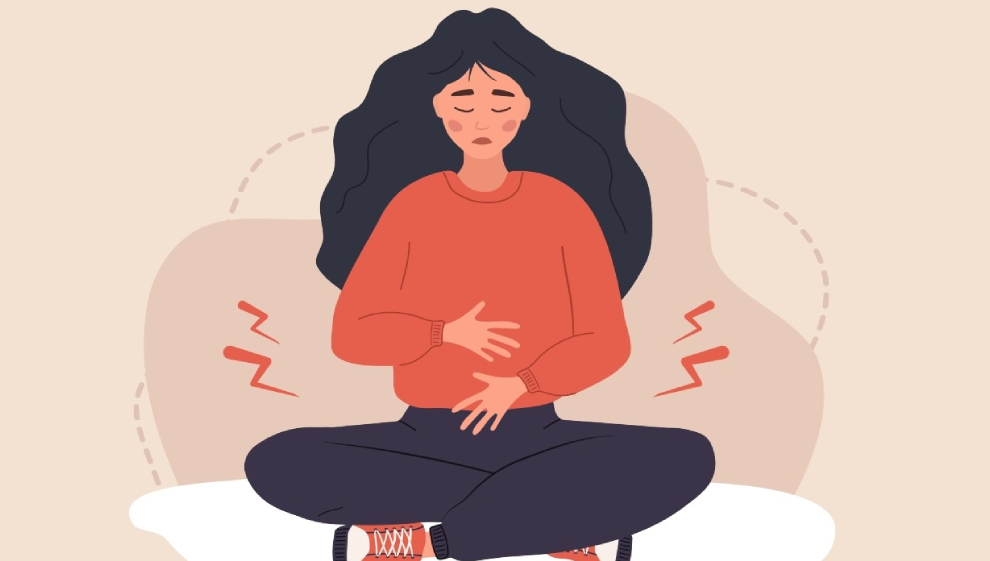Period pain | The causes, symptoms and treatments
- Overview
- What is period pain?
- What makes a painful period worse?
- When is period pain something to worry about?
- What are some common symptoms of period pain?
- What can I do to lessen the pain every month?
- Useful coping strategies for problem periods
- Periods and the pill
- All you need to know about endometriosis
- All you need to know about adenomyosis
- All you need to know about fibroids
- All you need to know about pelvic inflammatory disease (PID)
- When to seek help
We’ve partnered with women’s and pelvic health expert Hazel Eatwell to learn more about painful periods and the underlying conditions that could be causing them.
What is period pain?
Pain associated with menstruation is called dysmenorrhea. Dysmenorrhea typically manifests because chemicals called prostaglandins that are produced in the uterus are released into the blood, causing your muscles and blood vessels in and around the uterus to contract. This is why you may experience abdominal or pelvic cramps during your period.
Sometimes, there’s a different reason why you’re in pain during menstruation. We’ll explore each of the conditions below in more detail to give you a bit more insight and show you what to look out for:
- Endometriosis and/or Adenomyosis: womb tissue growing where it shouldn’t
- Fibroids: growths occurring around the womb
- Pelvic inflammatory disease: an infection of the womb, fallopian tubes, and ovaries
What makes a painful period worse?
Whether or not you experience a lot of pain when you menstruate is largely down to biology. Unfortunately, if the female members of your family grew up experiencing painful periods, the chances are that you will too.
There are some lifestyle factors that can worsen period pain. These include:
- Being overweight
- Smoking
- Certain mental health conditions like depression
- Alcohol consumption
- Never having had a baby
- Your diet
- Stress and anxiety levels
When is period pain something to worry about?
You might have grown up being taught that period pain is all part of being a woman. You might even have been told to ignore the symptoms because they will go away when you stop menstruating. Unfortunately, this perpetuates a damaging narrative that can mean young girls ignore the signs and symptoms of something more severe.

Extreme pain whilst you’re menstruating is not normal and should never be ignored. If your cramps, aches, and pains prevent you from getting out of bed, for example, this could be a sign of something more serious.
Starting a pain diary that you can show your GP or gynaecologist is a great place to start. Rank the pain from 1 to 10 and note down any accompanying symptoms that you regularly experience. The more information you can collect, the better.
What are some common symptoms of period pain?
Period pain is different for everyone. There is no one set of symptoms that affect all women and even shared symptoms vary in intensity. Some common symptoms are:
- Abdominal cramps
- Headaches
- Nausea
- Sickness
- Dizziness
- Back pain
- Muscular pain
What can I do to lessen the pain every month?
Ensuring you stay hydrated is vital. Herbal teas are a tasty way to make sure you’re drinking plenty of water, and many women even report the warm liquid helps soothe stomach cramp pain. Try and avoid all caffeine and alcohol whilst menstruating as they cause your blood vessels to narrow which can make cramping worse.
Tracking your periods so you know when you are due to start menstruating is a great way to help you anticipate pain before it hits. Interested in learning about what period tracking is and why it matters? Click here to find out more.
Creating a period care package that contains everything you need to limit pain and manage the week is a great way to lower anxiety about menstruating. Things to include are pads, tampons, heat packs, muscular pain-relief gel, comfortable underwear, your favourite herbal teas, and a hot water bottle. You can even include some of your favourite foods to make yourself a bit more comfortable.
Useful coping strategies for problem periods
You don’t have to suffer with problem periods in silence. Talk to your GP or women’s health specialist about what you’re experiencing means and they will investigate and share helpful strategies for minimising pain and managing your period.
Consultant Women’s Health Specialist Dr Annie Evans shares her knowledge in a short video providing sound advice around problem periods.
Break free from problem periods | Nuffield Health
Below are some strategies that you could start implementing at home whilst you wait to see a professional:
- Exercise: exercise helps produce chemicals and endorphins that block pain
- Apply heat: taking a warm bath or placing a hot water bottle or heat pad on your abdomen can be soothing
- Sleep: getting enough sleep during your period prevents irritation and restlessness associated with sleeplessness and fatigue adding to your discomfort
- Relax: practicing mindfulness or gentle yoga can help ground you and give you a new perspective on pain.
Periods and the pill

Many women never explore the link between the contraceptive pill (birth control pill) and the management of their period. In fact, the pill was first developed as a menstrual cycle regulator to give women lighter and shorter bleeds.
The pill blocks the creation of hormones involved in ovulation and menstruation, meaning you avoid having a period altogether and drastically reduce the likelihood of getting pregnant.
Modern day pills contain a variety of different hormone blends and there are a wide variety of options available. There are also other contraceptive methods, including loading small amounts of hormones into the womb. These alternative contraceptive options can be explored during your discussion with your GP or women’s health professional.
All you need to know about endometriosis
What is endometriosis?
Endometriosis is a women’s health condition where womb-lining cells begin to grow outside of the womb. The endometrial-like tissue builds up and bleeds like normal, however, it has no method of release like the uterus lining that is shed during your period.
Endometriosis affects 1 in 10 women in the UK, but many go undiagnosed because they don’t even know they have it. On average, it takes almost eight years to get a diagnosis even though it affects an estimated 176 million women worldwide.
Symptoms often start early in life, meaning many women simply accept them as normal. In most cases endometriosis is treatable, but the longer it goes undiagnosed the more damage it can do to your internal organs and reproductive system. If you're concerned about endometriosis or any of its associated symptoms, consult your GP or a women's health specialist.
What are the symptoms of endometriosis?
- Very painful periods that are prolonged and irregular
- Diarrhoea, nausea, vomiting, headaches, and dizziness during menstruation
- Pain during sex
- Underlying bowel pain when going to the toilet
- Extreme fatigue and tiredness
- Infertility
- Depression
Below, consultant gynaecologist at Nuffield Health Bristol Caroline Overton discusses 4 signs of endometriosis that you should never ignore.
Painful periods and endometriosis
During your menstrual cycle, the endometrial cells that sit outside the uterus thicken and bleed like normal. This means the pain comes on with your period as normal but is more severe and lasts longer than typical period pain.
Because Endometriosis often runs in families, it can go undetected when periods are discussed. A good rule of thumb for evaluating your period pain is to ask yourself if the pain is severe enough to interrupt your life for 3 - 4 days a month.
Pain while using the toilet
Over time, the womb-lining cells that bleed outside the womb can create organ adhesions in the pelvis. This can contribute to pain during bowel movements and when urinating at any time, not just when you are on your period.
Pain during sex
Unfortunately, women with endometriosis may have only ever known sex to be painful and so think this is normal. The bleeding outside the womb has no way of leaving the body and so builds up, causing internal scarring and inflammation. These painful areas are agitated during sex, diminishing a woman's ability to enjoy intercourse, and sometimes placing strain on mental health and sexual relationships.
Difficulty getting pregnant
When endometriosis is left untreated, fibrosis can occur and the adhesion between organs in the pelvis can negatively impact the ovarian tubes. Not only does this make getting pregnant more difficult, but it can also render a woman infertile.
All you need to know about adenomyosis
Adenomyosis is a misunderstood condition where the uterus lining becomes partially or completely embedded in the muscle of the walls of the uterus. During the monthly period, this tissue bleeds as normal, however, any discharge may appear significantly heavier.
This is because the muscles and blood vessels in the area become inflamed and tissue becomes displaced along with the uterine lining when the uterine wall lining is shed.
All you need to know about fibroids
Fibroids are growths that form on the walls of the uterus. They can be as small as a pea, or as large as a melon. They don’t turn cancerous, but you may find they sometimes result in heavy or painful, long periods. Fibroids can leave a bizarre feeling of fullness or discomfort in your pelvis and make it difficult for you to pass urine without pain.
You may also find that you experience discomfort during sex, similar to pain associated with endometriosis.
All you need to know about pelvic inflammatory disease (PID)
PID is an infection of the female reproductive organs. It occurs most frequently when sexually transmitted bacteria spread from your vagina to your uterus, fallopian tubes, or ovaries.
PID is a common condition that can be a cause of painful periods for women of any age.
Symptoms of pelvic inflammatory disease (PID)
It’s not uncommon for pelvic inflammatory disease to occur without symptoms. This can make it a difficult condition to recognise. When present, symptoms often include:
- Abnormally heavy or painful periods
- Pain in the pelvis or lower stomach area
- Discomfort or pain in the pelvis during sex
- Pain when urinating
- bleeding between periods and after sex
- Unusual vaginal discharge, especially if it's yellow, green or smelly
- High temperature or fever
- Feeling and being sick.
What causes pelvic inflammatory disease?
Most cases of PID are caused by a bacterial infection that's spread from the vagina or the cervix to the reproductive organs. Many different types of bacteria can cause PID. In many cases, it's caused by a sexually transmitted infection (STI) like chlamydia or gonorrhoea.
PID can cause the fallopian tubes to become scarred and narrow. This can make it difficult for eggs to pass from the ovaries into the womb, increasing the chance of an ectopic pregnancy.
Some women with PID become infertile because of the condition. You are most at risk of severe complications if you have delayed treatment or had repeated episodes of PID. Most women treated for PID are still able to get pregnant without any problems.
Treatments for PID
PID typically clears up with a course of antibiotics taken over 14 days. Treatments also include a mixture of tablets and an injection. During this time, cease sexual activity.
When to seek help
If any of the symptoms above sound familiar, it’s important you get yourself checked by your GP or a sexual health clinic professional. Often, the conditions associated with problematic periods are easily treated. They can however, have a lasting impact on your health if ignored.
If you have severe pain, you should seek urgent medical attention from your GP or local A&E department.
Last updated Friday 27 October 2023
First published on Wednesday 16 August 2023

